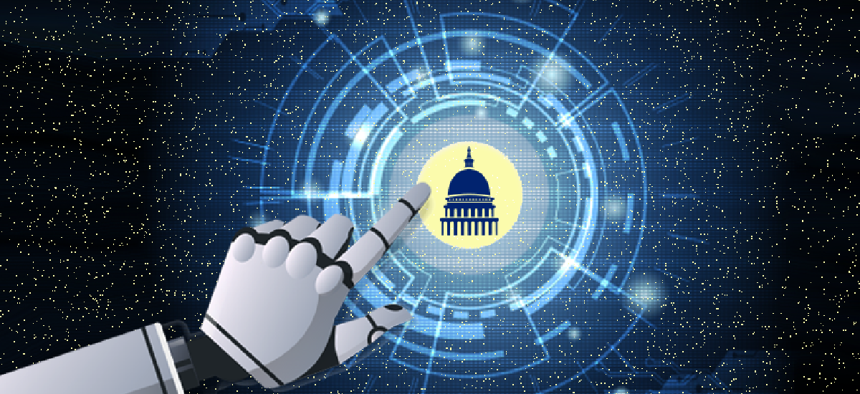How government uses AI

The top public-sector use cases for artificial intelligence are quality control, workforce management and cybersecurity, according to a recent survey.
The top public-sector use cases for artificial intelligence (AI) are quality control, workforce management and cybersecurity, according to a recent survey.
Quality control issues such as detecting defects and finding errors in software code topped the list of AI uses with nearly half -- 47% of survey respondents -- citing it, according to “Government executives on AI: Surveying how the public sector is approaching an AI-enabled future,” a report released by Deloitte Consulting last month. Workforce management tasks, such as recruiting and training, and cybersecurity tied for second place with 38% of respondents citing them. Rounding out the top three was another tie: Thirty-five percent said IT automation and predictive analytics were their main uses for AI.
Although public-sector organizations are largely enthusiastic about using AI, agencies are feeling the growing pains that come with the maturation of any technology. Besides using guidance such as the administration's American AI Initiative, issued in February to advance AI, government entities are partnering with industry or other agencies to mitigate risks and push the boundaries of what’s possible with AI. For instance, 62% of public-sector respondents said they are co-developing with partners, compared with 52% of private-sector respondents.
Government workers also rely more on AI as a service, with 55% of them citing it, while 49% of commercial respondents did.
Although AI is frequently called an “emerging technology,” it’s not really new. The Social Security Administration awarded the first AI contract in 1985. It’s only recently that other technologies have caught up to it, making it a not just viable, but sought-after element of IT, especially as agencies work to modernize their environments.
Ethical risks, budgets and lack of a skilled workforce are now the main roadblocks to the government’s use of AI, putting the sector at the low end of the AI maturity curve. The survey classifies 45% of government users as starters, whereas about 30% of the top three industry AI users -- financial services and insurance; technology, media and telecommunications; and energy, resources and utilities -- are classified as seasoned. Still, agencies are working to gain experience by prototyping projects in controlled environments, according to the report.
“The road to full-scale AI implementation may be a long one for many public sector agencies, but pilots, experiments, and AI initiatives in different pockets of government continue to grow,” the report states.
Overall, about 57% of respondents said AI is “very” or “critically” important to their organization’s success today, and 74% said it would be in the next two years.
Deloitte surveyed 1,1000 executives at U.S.-based organizations across 10 industries that were using AI in the third quarter of 2018. About 10% of respondents were from the public sector.





